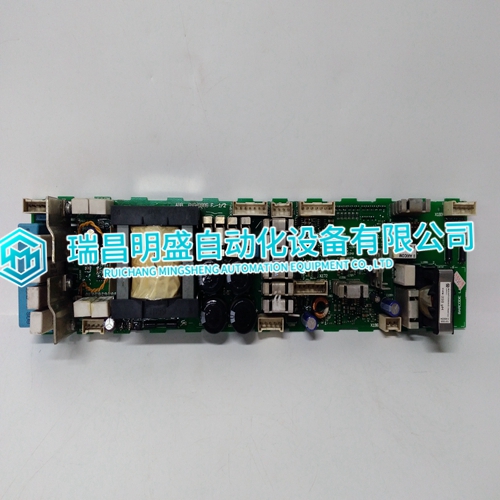Industry news
DSMB-01C Power supply module and efficient production concept
DSMB-01C Power supply module and efficient production concept
Interrupt function The interrupt function may be used from either a ladder or BASIC program. Inputs 1-4 correspond to terminal numbers 1-4. (1) Interrupt processing in a ladder program When using the interrupt function as an interrupt input, make an “I/O interrupt definition” using the INTP instruction. You can perform I/O interrupt definitions for a maximum of 4 points per single CPU module. When an interrupt input is presented from the F3XH04-3N, an interrupt program that begins with an INTP instruction and ends with an IRET instruction is executed. The interrupt response time, which is the time required for the CPU module to recognize an interrupt input from the F3XH04-3N and start executing the interrupt program, is dependant on the CPU module model and has the following approximate values.Do not perform "I/O Interrupt Definition" for the same F3XH04-3N input module from multiple CPU modules. The CPU module cannot be correctly notified of an interrupt from the F3XH04-3N input module.

Define the following interrupt period as a standard:
- Interrupt input . . . only one point defined per CPU 1 ms and above If the interrupt period is 1 to 2 ms, ensure that the scan time is 2 ms or longer. If the scan time is less than 2 ms, use the constant scan time feature. - Interrupt input . . . 2 to 4 points defined per CPU 10 ms and above If the interrupt period is short, the interrupt program will be executed frequently, affecting normal program execution. It may also cause delay in responding to commands from programming tool or personal computer links. (2) Interrupt processing in a BASIC program Declare the acceptance of interrupts with an ON INT statement after declaring the use of a module with an ASSIGN statement. For more information, see Section C4.3, “Interrupts” , in the BASIC CPU Modules and YM-BASIC/FA Programming Language (IM 34M06Q22-01E).
Functional Description
- Pulse-capture Function The pulse-capture function is designed to reliably catch input pulses shorter than the scan time. As the CPU module usually reads the data of I/O modules during I/O refresh cycle, when a normal input module is used, the CPU may fail to read input pulses shorter than the scan time. The F3XH04-3N module provides a pulse capture function, which can, once it detects pulses longer than 50 µs, hold the data until the next timing for data reading so that such pulses can be reliably captured by the the CPU during I/O refreshing. However, the F3XH04-3N module cannot catch input pulses shorter than 50 µs. The timing diagram of this function is shown below.